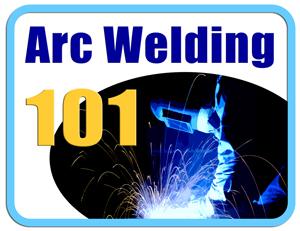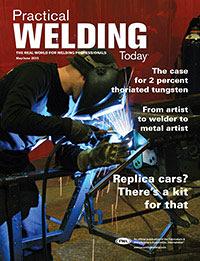- FMA
- The Fabricator
- FABTECH
- Canadian Metalworking
Categories
- Additive Manufacturing
- Aluminum Welding
- Arc Welding
- Assembly and Joining
- Automation and Robotics
- Bending and Forming
- Consumables
- Cutting and Weld Prep
- Electric Vehicles
- En Español
- Finishing
- Hydroforming
- Laser Cutting
- Laser Welding
- Machining
- Manufacturing Software
- Materials Handling
- Metals/Materials
- Oxyfuel Cutting
- Plasma Cutting
- Power Tools
- Punching and Other Holemaking
- Roll Forming
- Safety
- Sawing
- Shearing
- Shop Management
- Testing and Measuring
- Tube and Pipe Fabrication
- Tube and Pipe Production
- Waterjet Cutting
Industry Directory
Webcasts
Podcasts
FAB 40
Advertise
Subscribe
Account Login
Search
Avoiding pinholes in your welds
- By Paul Cameron
- Updated February 29, 2024
- May 12, 2015
- Article
- Arc Welding
Q: I am machining a bearing housing made out of 1045 and I have to plug and weld some cross holes. I am also using gas tungsten arc welding (GTAW) to eliminate a weld that is too large. My problem is that I am getting pinholes in my weld. Is it because I am welding 1018 to 1045? We didn’t machine the parts dry so it’s possible that coolant residue remains on the parts. I tried cleaning them with brake cleaner but that didn’t seem to help.
A: First, a word of caution: Welding and brake cleaners can be a deadly combination. The Safety Data Sheet (SDS) for a can of brake cleaner may read, “Do not use this product near open flames, welding operations, or excessive heat. Vapors may decompose to harmful or fatal corrosive gases such as hydrogen chloride and possibly phosgene.” This can be debilitating or even deadly to the welder or those around him or her. Please use caution when determining how your weldment will be cleaned, and use only approved cleaners according to the manufacturer’s instructions.
The welding of the materials shouldn’t be a problem. The machined port looks to be made up of three different drilling operations. Are all three completed before the plug is welded in?
Why Pinholes Form
The reason I ask is if you drilled the port first (while the others are drilled after welding), trying to weld a plug in the hole creates a condition that I’ve dealt with most of my career. When you attempt to seal-weld the only opening in any cavity, the air (or gas) in that cavity heats and expands. During that expansion a pinhole will form somewhere in the weld (just upon solidification) to allow that expanding gas to escape. Molten metal makes a poor seal.
Pipe welders see this same condition when they finish the root pass in a purged pipe. If they don’t build an alternative location for the gas to escape, the gas will blow through the final weld crater.
I’ve also dealt with this condition on flare bevel groove welds in a robotic application. We were able to remedy that with a punched hole on the faying surface of the joint.
I’m not sure if this is your condition, but it is possible, especially if you’re trying to seal the only opening.
About the Author

Paul Cameron
Braun Intertec
4210 Highway 14 East
Rochester, MN 55904
About the Publication
subscribe now

The Welder, formerly known as Practical Welding Today, is a showcase of the real people who make the products we use and work with every day. This magazine has served the welding community in North America well for more than 20 years.
start your free subscription- Stay connected from anywhere

Easily access valuable industry resources now with full access to the digital edition of The Fabricator.

Easily access valuable industry resources now with full access to the digital edition of The Welder.

Easily access valuable industry resources now with full access to the digital edition of The Tube and Pipe Journal.
- Podcasting
- Podcast:
- The Fabricator Podcast
- Published:
- 04/16/2024
- Running Time:
- 63:29
In this episode of The Fabricator Podcast, Caleb Chamberlain, co-founder and CEO of OSH Cut, discusses his company’s...
- Industry Events
16th Annual Safety Conference
- April 30 - May 1, 2024
- Elgin,
Pipe and Tube Conference
- May 21 - 22, 2024
- Omaha, NE
World-Class Roll Forming Workshop
- June 5 - 6, 2024
- Louisville, KY
Advanced Laser Application Workshop
- June 25 - 27, 2024
- Novi, MI
































